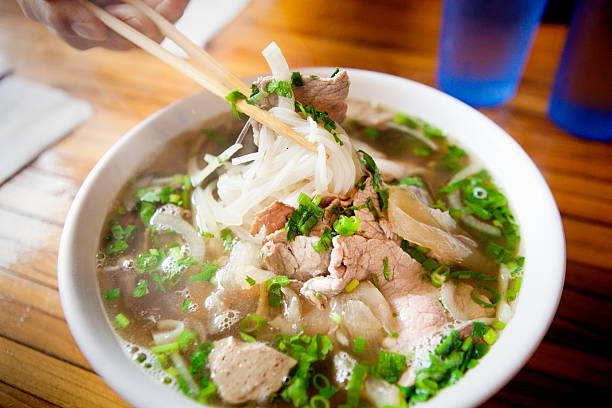Experiencing the Intricacies of Vietnamese Pho
For many of us, a steaming bowl of pho is the perfect comfort food. This Vietnamese dish, pronounced as "fuh", not only warms the body but also the soul. But how much do you really know about this iconic national dish of Vietnam? In this article, we will dive into the rich history of pho, its distinct ingredients, the art of preparing it, and modern interpretations that are challenging the traditional pho.

The Rich History of Pho
Pho originated in Northern Vietnam in the early 20th century. It’s believed to have been influenced by both Chinese and French cooking. The dish’s name is thought to have been derived from the French dish “pot-au-feu”.
The Components of Pho
Pho consists of three main components: the broth, the rice noodles, and the meat. The broth is traditionally made by simmering beef bones, oxtails, flank steak, charred onion, and spices. The rice noodles used are called bánh phở, flat and thin, made specifically for this dish.
The Art of Preparing Pho
The preparation of pho is much more than just cooking; it’s an art form. The broth is simmered for several hours to extract the maximum flavor from the beef bones. The spices are roasted in a dry pan to release their aroma before being added to the broth.
Modern Interpretations of Pho
Modern chefs are pushing the boundaries of traditional pho. Some are experimenting with new ingredients like seafood or duck. Others are creating vegetarian or vegan versions of the dish. However, many pho purists argue that these modern takes are straying too far from the original recipe.
Pho Around the World
Pho has become popular worldwide, with restaurants serving this Vietnamese dish in many major cities. Each region adds its own local twist to the recipe, reflecting the diversity and adaptability of this beloved dish.
Quick Pho Facts:
- Pho is traditionally a breakfast dish in Vietnam.
- The dish gained popularity worldwide after the Vietnam War when refugees brought the recipe with them.
- The longest pho noodle ever made was over 300 feet long.
- Ho Chi Minh City (Saigon) and Hanoi have different versions of pho. The former is sweeter and has more ingredients, while the latter is simpler and more savory.
In conclusion, pho is much more than just a noodle soup; it’s a culinary icon that represents the history and culture of Vietnam. Whether you’re enjoying a traditional bowl of beef pho or trying a modern interpretation, remember that every spoonful carries with it the rich heritage of Vietnamese cuisine. So, the next time you’re savoring your bowl of pho, take a moment to appreciate the intricate flavors and the culinary journey that led to its creation.




